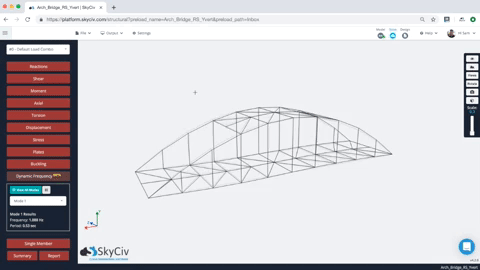Structural dynamics and vibration analysis play a crucial role in the design and analysis of beams. Beams are fundamental components of structures, and understanding their dynamic behavior is essential to ensure their performance and safety. This article provides an overview of structural dynamics and vibration analysis in beam design, covering key concepts, analysis techniques, and design considerations.
Structural Dynamics
Structural dynamics is the study of how structures respond to dynamic loads and forces. In the context of beam design, it involves analyzing the behavior of beams under various loading conditions, including static loads, dynamic loads, and environmental loads such as wind or earthquakes. The dynamic response of a beam is influenced by its material properties, geometry, boundary conditions, and the characteristics of the applied loads.
Vibration Analysis
Vibration analysis is a subset of structural dynamics that focuses on the study of vibrations in structures. Beams can experience vibrations due to various factors, including external forces, resonant frequencies, and system excitations. Vibration analysis helps engineers understand the natural frequencies, modes of vibration, and dynamic response of beams to ensure they remain within acceptable limits.

Type of Vibration
When a beam vibrates, it does so in specific patterns known as modes of vibration. Each mode corresponds to a unique natural frequency at which the beam tends to vibrate. The number of modes and their corresponding frequencies depend on the beam’s geometry, material properties, and boundary conditions. By analyzing these modes, engineers can identify potential vibration issues and optimize the beam’s design to minimize unwanted vibrations.
Finite Element Analysis (FEA)
Finite Element Analysis is a powerful numerical method widely used for structural dynamics and vibration analysis. FEA breaks down the beam into smaller, interconnected elements, allowing for the simulation of complex behaviors. By applying appropriate boundary conditions and loading conditions, engineers can predict the dynamic response of the beam and evaluate its performance. FEA enables the identification of critical areas, such as points of stress concentration or potential resonance, aiding in the design optimization process.

Modal Analysis
Modal analysis is a key technique used in structural dynamics and vibration analysis. It involves determining the natural frequencies, mode shapes, and damping characteristics of a beam. Natural frequencies represent the frequencies at which the beam naturally tends to vibrate without external excitation. Mode shapes describe the spatial patterns of vibration associated with each natural frequency. Damping refers to the dissipation of energy during vibration. Modal analysis helps engineers identify critical frequencies and design beams to avoid resonance, which can lead to excessive vibrations and structural failure.
Design Considerations
Structural dynamics and vibration analysis influence beam design in several ways. First, engineers need to ensure that the beam’s natural frequencies are well separated from the expected frequency range of external forces. If natural frequencies coincide with the applied load frequencies, resonance can occur, leading to significant vibrations and potential structural damage. Therefore, it is crucial to consider natural frequencies during the design phase and modify the beam’s properties or dimensions if necessary.
Another important consideration is damping. Adequate damping is necessary to dissipate energy and reduce vibration amplitudes. Damping can be achieved through various methods, including material selection, the addition of dampers, or structural modifications. The choice of damping mechanism depends on the specific requirements and constraints of the beam design.
Furthermore, dynamic loading conditions, such as wind or earthquakes, should be carefully accounted for in beam design. These loads can induce significant vibrations that may exceed the beam’s capacity if not properly addressed. Engineers employ various analysis techniques, including FEA and modal analysis, to assess the dynamic response of beams under different loading scenarios and optimize their design accordingly.

Structural dynamics and vibration analysis are essential aspects of beam design. By understanding the dynamic behavior of beams, engineers can ensure their designs are safe and meet the needs of their clients.
Want to try SkyCiv’s Beam software? Our free tool allows users to perform simple beam calculations without any download or installation!
Get Started with the New SkyCiv Beam today!
SkyCiv Beam is a powerful design module for simple beam calculations. Always improving with constant updates to make it reliable for engineers like you. Simply launch the SkyCiv Beam and try it today! It’s easy to get started but if you need more help, then be sure to visit our documentation or get in touch with us today!
Not a SkyCiv User? Sign up for a Free 14 Day Trial to get started today!


